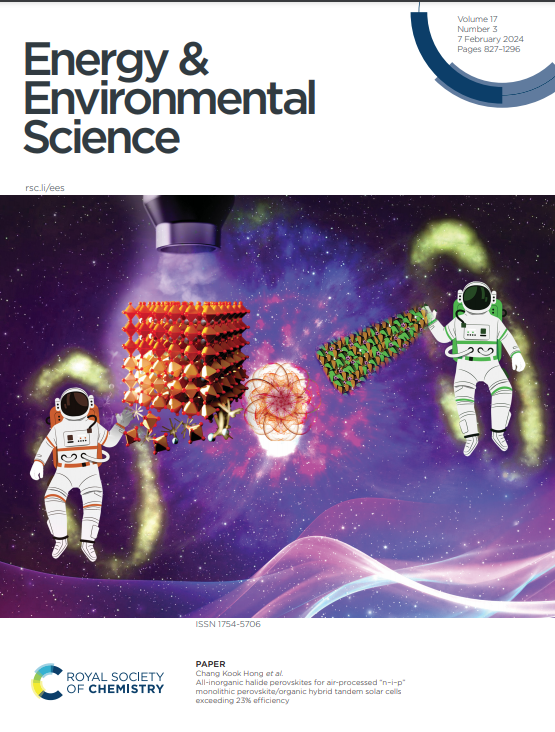Electrochemical acid-base generators for decoupled carbon management
IF 32.4
1区 材料科学
Q1 CHEMISTRY, MULTIDISCIPLINARY
引用次数: 0
Abstract
Carbon dioxide capture and management are critical technologies for achieving carbon neutrality and mitigating the impacts of global warming. One promising approach for decarbonization involves electrochemical generation of concentrated acid and base. This effectively decouples the carbon capture-release process from the electrochemical cell, avoiding the kinetic limitations associated with reactions involving CO2. Designing an electrochemical acid-base generator with high current efficiency and low energy cost is challenging. Following investigations of the crossover rates of protons and hydroxide ions through ion-exchange membranes, we designed a multichambered electrochemical cell for generating weak acid and strong base, which significantly suppressed acid-base crossover. By equipping the center chamber with a serpentine flow field, we achieved acid-base production at high concentrations (> 1 M) and high Coulombic efficiency (> 95%) while maintaining relatively low energy costs. With this device, we demonstrated carbon management examples of simulated flue gas capture, direct air capture, and green production of slaked lime, as one step toward green cement production. The key components of the prototype can be adapted for use in other electrochemical cell designs, ensuring high efficiency in concentrated acid-base generation in other application scenarios.求助全文
约1分钟内获得全文
求助全文
来源期刊

Energy & Environmental Science
化学-工程:化工
CiteScore
50.50
自引率
2.20%
发文量
349
审稿时长
2.2 months
期刊介绍:
Energy & Environmental Science, a peer-reviewed scientific journal, publishes original research and review articles covering interdisciplinary topics in the (bio)chemical and (bio)physical sciences, as well as chemical engineering disciplines. Published monthly by the Royal Society of Chemistry (RSC), a not-for-profit publisher, Energy & Environmental Science is recognized as a leading journal. It boasts an impressive impact factor of 8.500 as of 2009, ranking 8th among 140 journals in the category "Chemistry, Multidisciplinary," second among 71 journals in "Energy & Fuels," second among 128 journals in "Engineering, Chemical," and first among 181 scientific journals in "Environmental Sciences."
Energy & Environmental Science publishes various types of articles, including Research Papers (original scientific work), Review Articles, Perspectives, and Minireviews (feature review-type articles of broad interest), Communications (original scientific work of an urgent nature), Opinions (personal, often speculative viewpoints or hypotheses on current topics), and Analysis Articles (in-depth examination of energy-related issues).
 求助内容:
求助内容: 应助结果提醒方式:
应助结果提醒方式:


